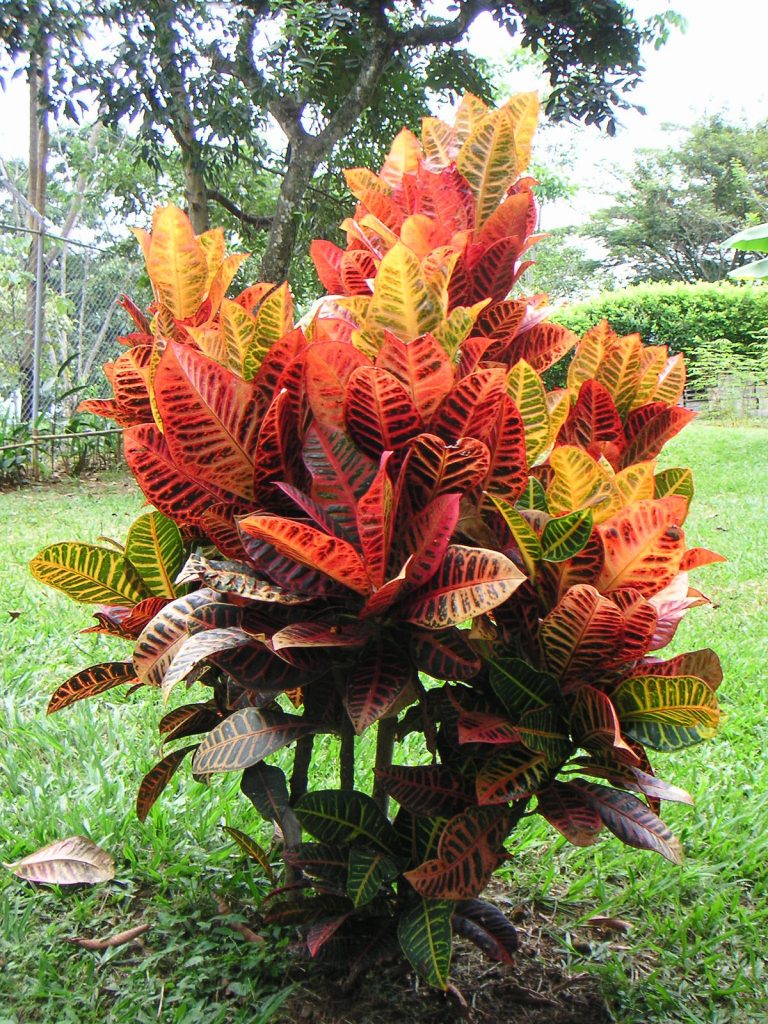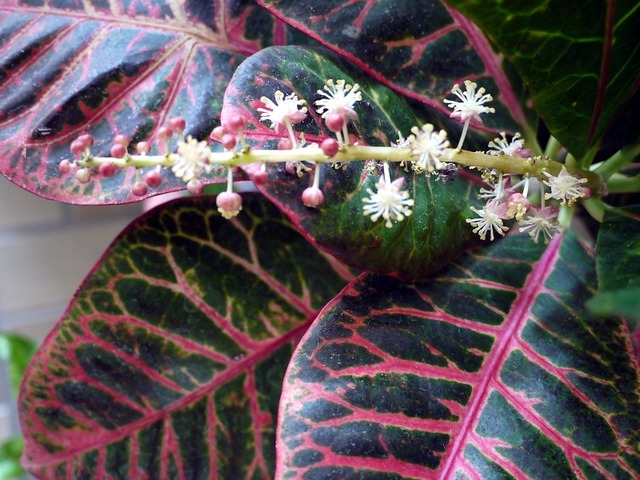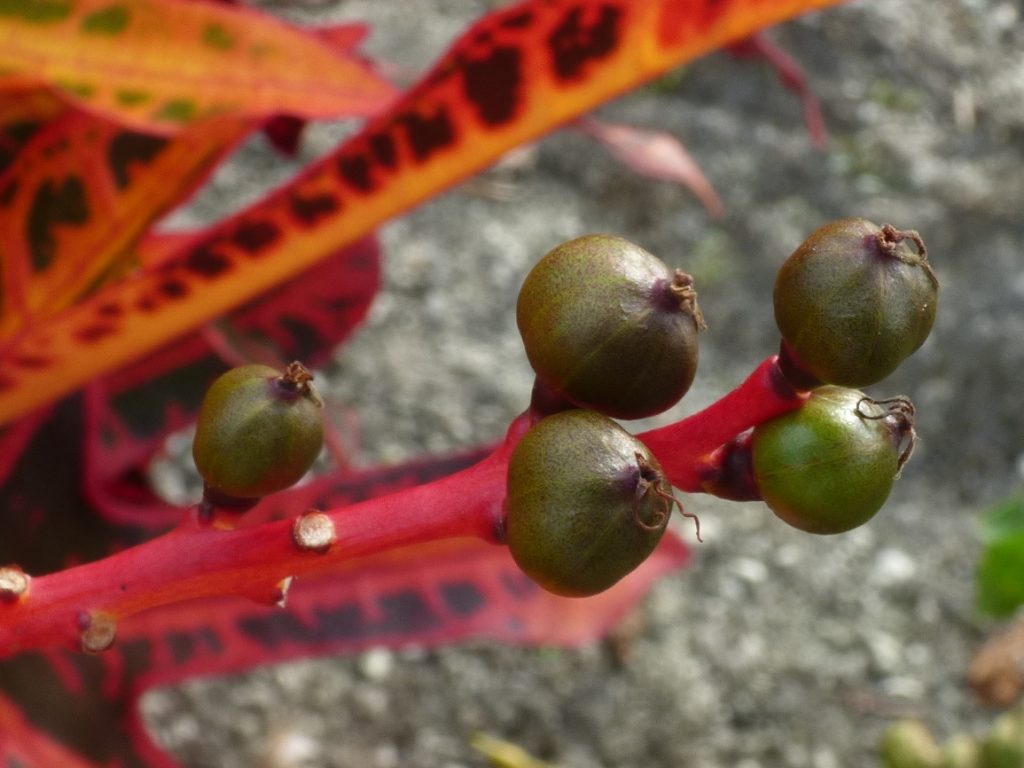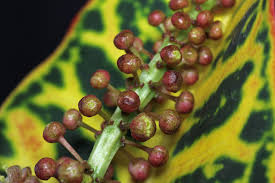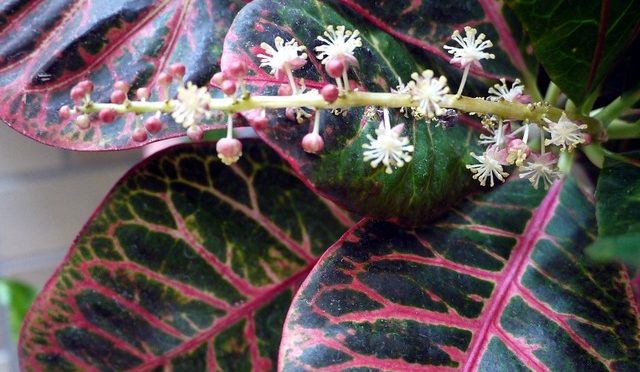Codiaeum variegatum is an evergreen shrub or a small tree branching from low down; it can grow up to 3 metres tall but is usually smaller in cultivation. The plant is sometimes harvested from the wild for local medicinal use. It is often grown as an ornamental in gardens, being especially valued for its vast range of variegated-leaf cultivars.
This species may be poisonous if consumed in large quantities. The bark, roots, latex and leaves are poisonous, containing the toxin called 5-deoxyingenol. Chewing the bark and roots is said to cause burning of the mouth. The latex has caused eczema in some gardeners after repeated exposure.
The leaves are abortifacient, antiamoebic, antibacterial, anticancer, antifungal, antioxidant, emmenagogue, purgative and sedative. A decoction of the crushed leaves is used in the treatment of diarrhea. Chewing three leaves and then swallowing the juice is used to stimulate menstrual flow, to induce an abortion or to facilitate parturition. The leaf sap is drunk and also applied topically to treat a snake bite. The sap of the leaves, combined with coconut milk, is used in the treatment of syphylitic lesions. The young leaves, combined with Pandanus macroieacceretia, coconut milk and the root sap of Areca catechu, is used in the treatment of gonorrhoea. The green liquid from boiled leaves is used as a wash to ease fevers. The sap from the leaves or the bark is used to treat sores and fungal infections.
